How is Black Sesame Technology progressing in the field of intelligent driving chips?
![]() 11/05 2024
11/05 2024
![]() 486
486
With the rapid transformation of the automotive industry towards intelligence and electrification, autonomous driving technology has become an important direction for future development. As a core technology of autonomous driving, automotive SoCs (System-on-Chips) have rapidly risen to prominence. As a leading Tier 2 chip supplier in China, Black Sesame Technology has gradually stood out in the intelligent driving chip market, leveraging its strong technological innovation, rich ecosystem empowerment, and mass production advantages.
Black Sesame Technology's core products mainly include two series of automotive-grade SoCs: Huashan Series and Wudang Series, covering autonomous driving needs at multiple levels. At the same time, Black Sesame Technology actively builds an ecosystem and forms full-stack capabilities from chips to solutions through self-developed development toolchains and middleware, serving automotive OEMs and Tier 1 suppliers. With self-developed IP and complete SoC design capabilities, Black Sesame Technology has gained a first-mover advantage in technology, ecosystem, and market, and has been widely recognized in the intelligent driving chip market competition.

Technical Advantages: Strong Support from Self-Developed IP and Full-Stack Design Capabilities
1. Advantages of Self-Developed Core Technology
In the intelligent driving SoC market, Black Sesame Technology stands out with its unique self-development capabilities. Self-developed IP cores give the company the initiative in automotive-grade SoC technology. Black Sesame Technology not only has abundant independent intellectual property rights in SoC chip design but has also achieved technological breakthroughs in core IP cores. For example, the company's A1000Pro series of high-compute SoC chips excels in L2+ autonomous driving scenarios, with a computing power of 106 TOPS at INT8 precision, making it one of the few domestic enterprises with this level of technology.
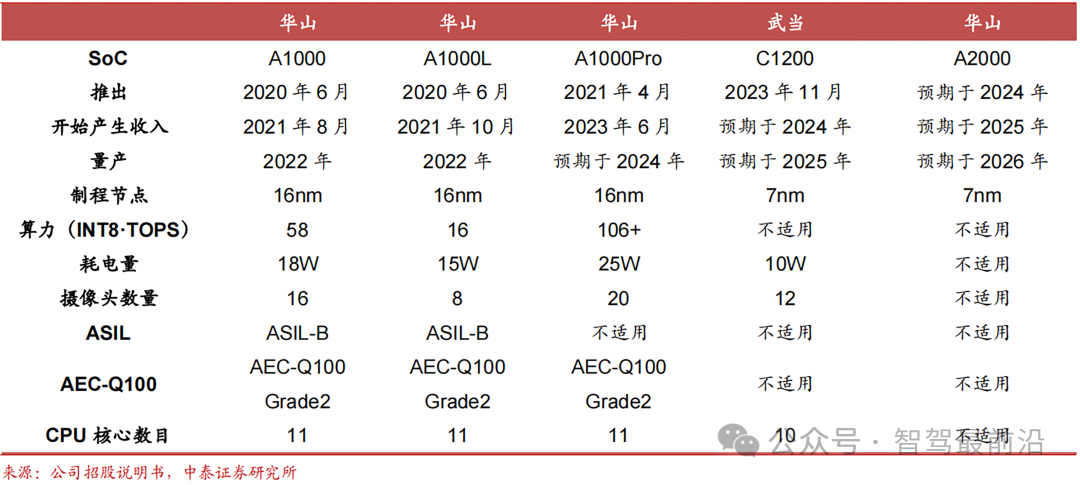
Performance Comparison of Black Sesame Technology Chips
Self-developed core technologies not only enhance Black Sesame Technology's technological flexibility but also significantly reduce costs and iteration cycles associated with outsourced IP. Compared to products from foreign vendors (such as Mobileye, NVIDIA, etc.), Black Sesame Technology's self-developed IP cores are more market-adaptive, especially in the complex Chinese autonomous driving market, where they can better meet local customer needs. At the same time, Black Sesame Technology's independent IP allows its products to maintain relatively independent and autonomous technological iteration capabilities amidst global chip supply chain instability, reducing dependence on external IP suppliers.
2. Product Iteration and Technology Roadmap
Black Sesame Technology's technology R&D roadmap is highly continuous and forward-looking. Following the successful mass production of the A1000 series, the company continues to target the high-compute and cross-domain computing SoC markets, planning to mass produce the C1200 cross-domain SoC chip in 2025. This chip not only functions in autonomous driving scenarios but also integrates intelligent cockpits and in-vehicle and external communication capabilities, becoming a core component of smart vehicle multi-domain integration solutions.
Another highlight of the technology roadmap is Black Sesame Technology's plan to mass produce the A2000 SoC chip in 2026. This chip aims to support L4 and above levels of autonomous driving, employing advanced 7nm process technology with significantly higher compute power than mainstream products on the market. Unlike most current vendors competing at L2+ and L3 levels, Black Sesame Technology aims to gain a proactive position in the future L4 market by preemptively deploying high-level autonomous driving chips. This forward-looking product iteration plan enables Black Sesame Technology to not only meet current market demands but also tackle future technological development challenges.
3. ISP and NPU Technological Innovation
In the SoC chip architecture, the image signal processor (ISP) and neural network processor (NPU) are two core modules. Black Sesame Technology's NeuralIQ ISP technology provides robust support for image processing in multi-camera environments, especially ensuring high-quality image output in complex lighting conditions (such as night, rainy, or foggy weather). This ISP architecture's crucial role in intelligent driving ensures vehicles can accurately perceive their surroundings in extreme environments, avoiding decision-making errors due to visual blurriness.
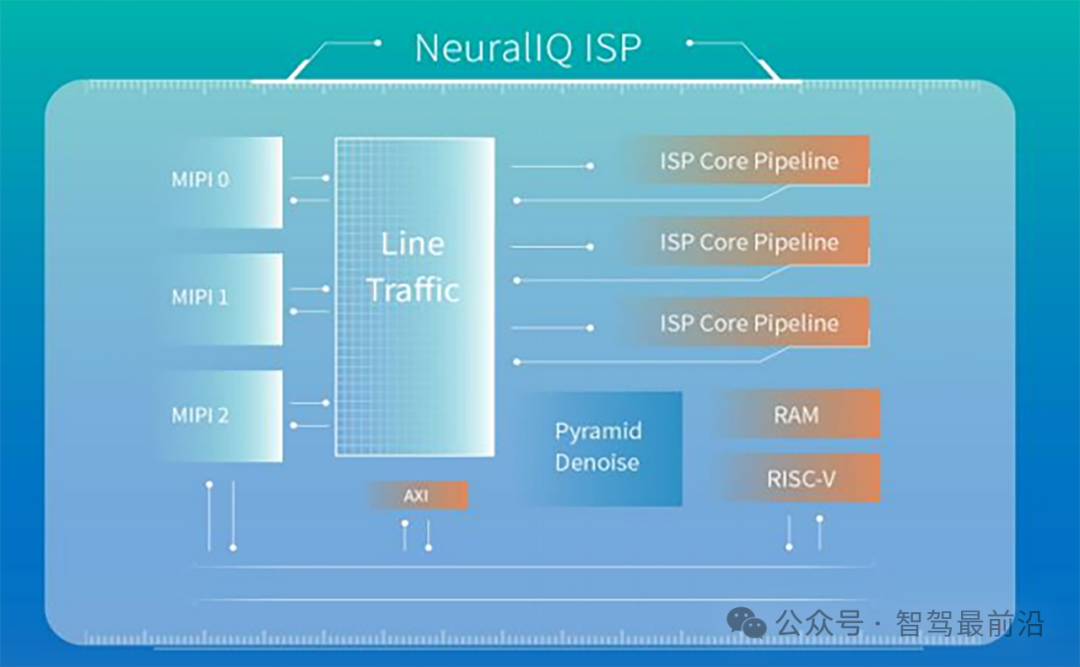
Black Sesame Technology's NeuralIQ ISP Architecture
Meanwhile, Black Sesame Technology's DynamAI NPU architecture also demonstrates strong computational capabilities. Through a low-power proprietary ASIC structure, DynamAI efficiently processes data from multiple sensors. Its third-generation DynamAI NN even natively supports the Transformer architecture, enabling end-to-end deep learning inference in high-level autonomous driving algorithms. Compared to NPU architectures from international giants like NVIDIA, Black Sesame Technology's DynamAI excels in energy efficiency and adaptability, particularly suitable for China's domestic autonomous driving needs.
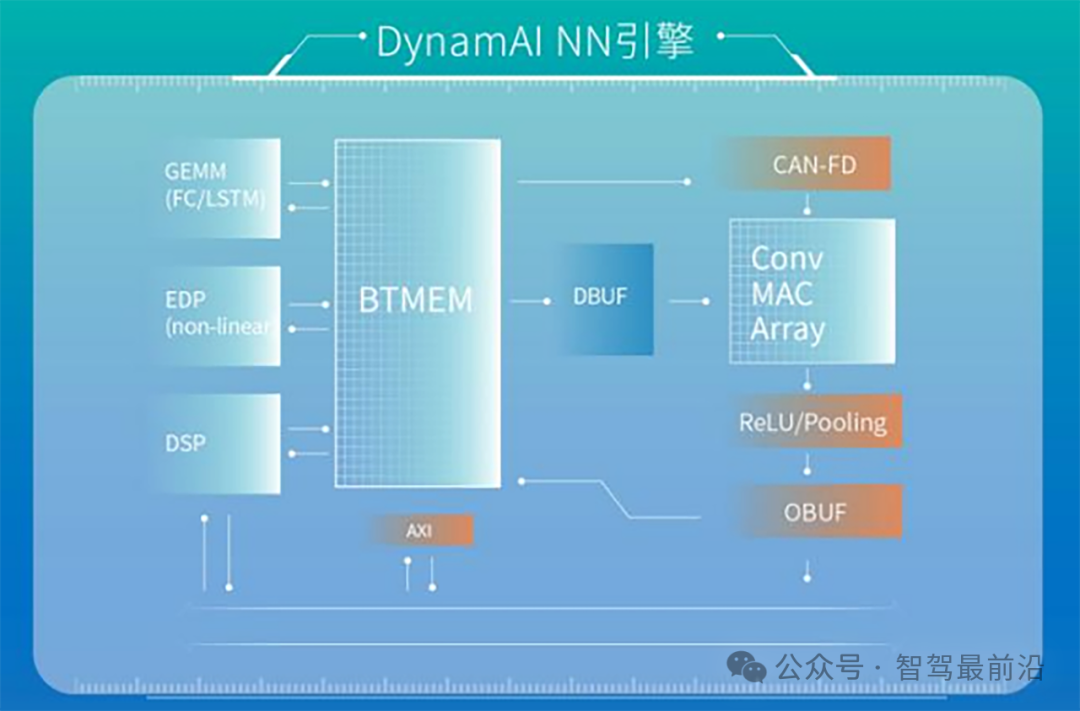
Black Sesame Technology's DynamAI NN Architecture

Ecosystem Empowerment: Dual Support from Toolchains and Middleware
1. Shanhai Development Toolchain: Flexible and Scalable Algorithm Support
The development of autonomous driving technology relies heavily on extensive algorithm development, debugging, and deployment. To this end, Black Sesame Technology has launched the Shanhai Development Toolchain, providing developers with comprehensive support from model training to actual deployment. The toolchain is highly open, supporting mainstream deep learning frameworks such as Tensorflow, Pytorch, and ONNX, and can automatically optimize the operational efficiency of different algorithms on SoC chips.
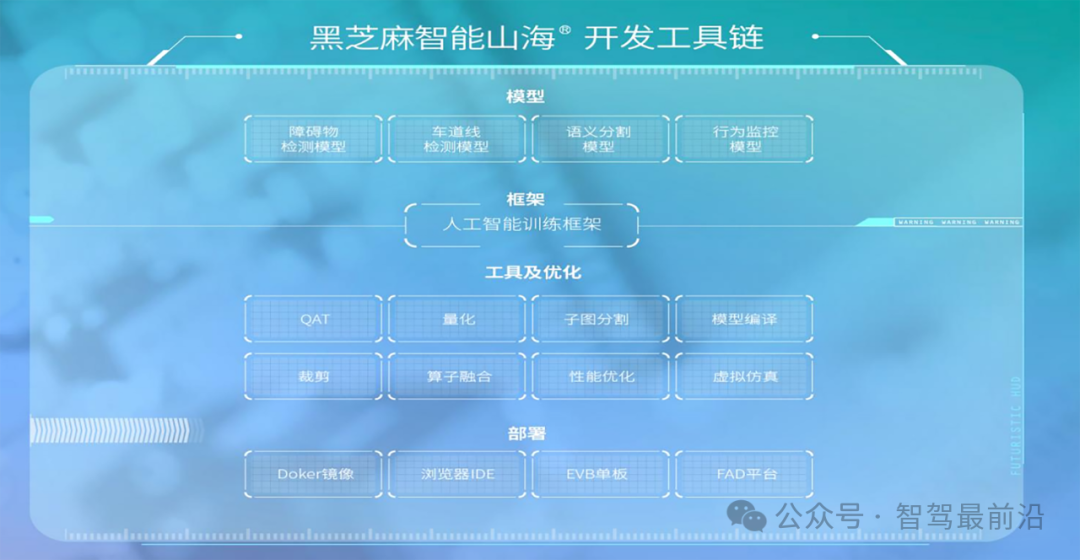
Illustration of Black Sesame Technology's Shanhai Development Toolchain
In practical applications, the Shanhai Development Toolchain accelerates the entire process from algorithm development to product launch. It provides abundant algorithm reference models and conversion cases, allowing customers to adjust based on existing models, reducing the difficulty of algorithm development. Especially for autonomous driving scenarios above L3 levels, the Shanhai Development Toolchain can migrate, quantify, and deploy models based on actual scenario needs, ensuring algorithms can efficiently run on high-compute SoC chips.
Compared to other SoC suppliers, Black Sesame Technology's Shanhai Toolchain not only supports a broader algorithm library but also offers high flexibility and scalability. For example, when dealing with dynamic heterogeneous tasks in different autonomous driving systems, the Shanhai Toolchain can allocate computing resources in real-time, ensuring stable system operation. This toolchain's design philosophy not only solves technical challenges in the development process but also provides customers with more options during system upgrades.
2. Hanhai Middleware: Flexible Support for Multi-Domain Applications
Middleware is the key layer for hardware and software collaboration in intelligent driving systems. Black Sesame Technology's Hanhai-ADSP middleware provides powerful hardware and software interface support for customers. With high openness and compatibility, Hanhai Middleware can support the needs of various autonomous driving systems and help customers reuse the same software applications across different vehicle models and hardware configurations, reducing development costs.
Hanhai Middleware is not only suitable for autonomous driving at L2+ and L3 levels but also plays a role in more complex multi-domain applications such as intelligent cockpits and vehicle-road coordination. Its open API interface allows developers to easily access the core processing functions of the SoC chip and make flexible adjustments as needed. At the same time, Hanhai Middleware also supports multi-sensor fusion processing, providing important support for the increasingly complex perception needs of current autonomous driving systems.
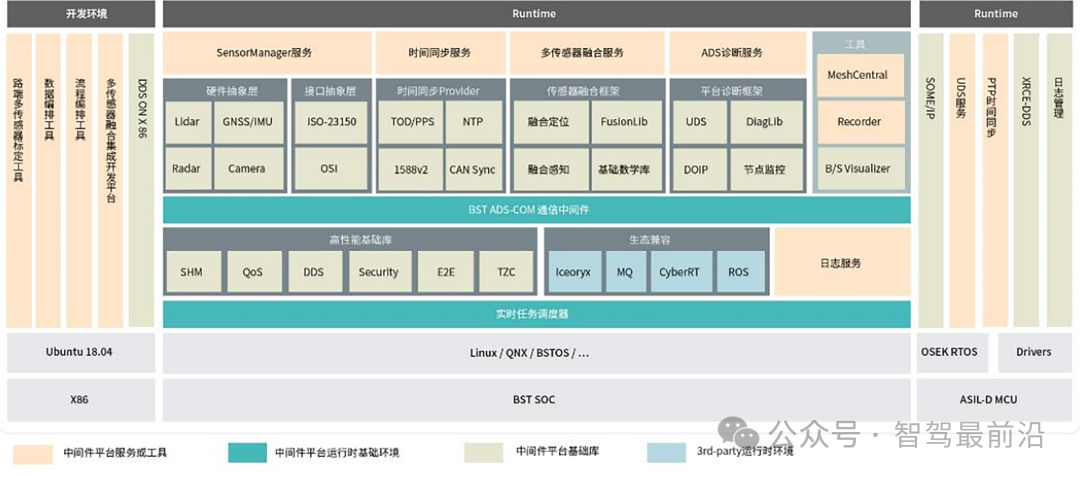
Illustration of Black Sesame Technology's Hanhai-ADSP Middleware
Through platform-based design, Hanhai Middleware not only helps customers reduce development time but also effectively addresses future system upgrade needs. Its high compatibility means customers can seamlessly migrate across different suppliers' hardware platforms, a particularly crucial feature in the rapid evolution of the current autonomous driving industry. Compared to peers, Black Sesame Technology's Hanhai Middleware offers higher flexibility and scalability, enabling its SoC products to better meet complex market demands.

Mass Production Advantages: Comprehensive Layout from Vehicle to Road
1. Rapid Expansion in the Vehicle-End Market
Black Sesame Technology's A1000 series of SoC chips have been applied in multiple mass-produced vehicle models, including the Lynk & Co 08 and Hopon V09, covering a wide range of market demands from mid-range to high-end. Leveraging powerful compute power and independent intellectual property rights, Black Sesame Technology's SoC products have gained widespread recognition in the vehicle-end market. In particular, its A1000L chip, with 16 TOPS of compute power, stands out in the L2+ autonomous driving market.
Through close collaboration with renowned automakers such as FAW, Geely, and Dongfeng, Black Sesame Technology has further expanded its market coverage. These collaborations not only bring stable shipments but also further validate the applicability and stability of its technology in the actual market. Simultaneously, Black Sesame Technology has also conducted in-depth cooperation with multiple Tier 1 suppliers such as FAW Group, Dongfeng Group, JAC Group, Hopon, Ecarx, Baidu, Bosch, ZF, and Magneti Marelli. Through the joint efforts of OEMs and Tier 1 suppliers, Black Sesame Technology's SoC chips have further enhanced their performance in the vehicle-end market.

Black Sesame Technology's OEM Customers
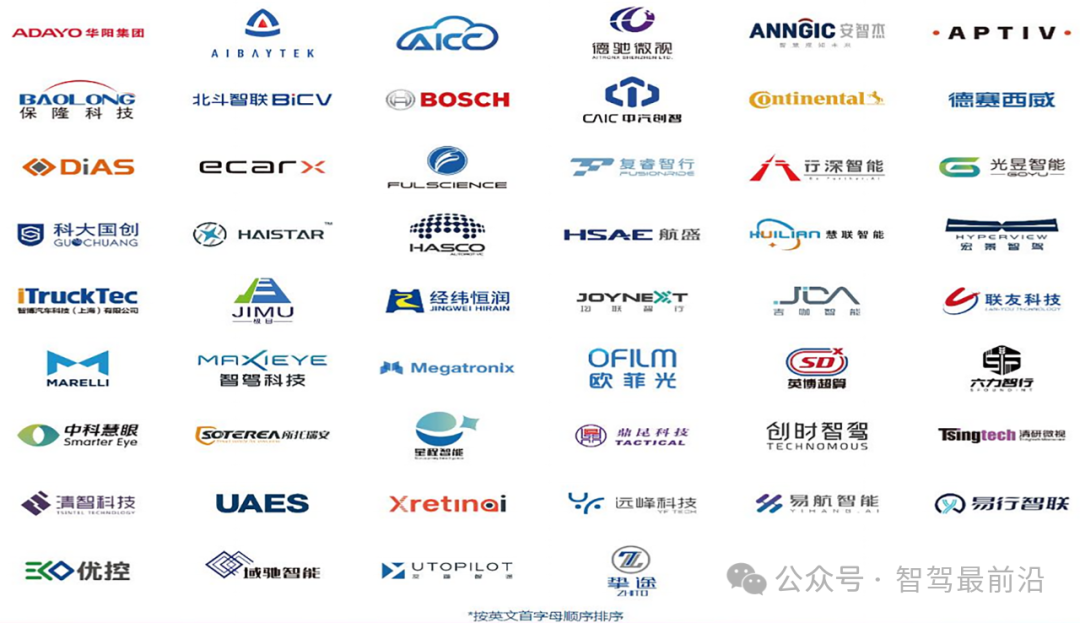
Black Sesame Technology's Tier 1 Customers
2. Collaborative Development in the Road-End Market
In addition to its successful layout in the vehicle-end market, Black Sesame Technology has also made significant breakthroughs in road-end perception and vehicle-road coordination. The company's roadside perception system can collaborate with automotive SoCs to provide a complete solution for future vehicle-road coordinated autonomous driving. Black Sesame Technology's road-end solutions have been applied in multiple smart city projects, including complex scenarios such as holographic road networks and intersections, significantly enhancing the safety and real-time response capabilities of autonomous driving systems.
Black Sesame Technology's full-stack capabilities, combined with its vehicle-end and road-end solutions, create a unique competitive advantage in the autonomous driving market. By providing a comprehensive set of perception and computing solutions from vehicle to road, Black Sesame Technology not only offers customers higher safety and reliability but also ensures the wide applicability of its products in complex environments. This vehicle-road dual-end coordination strategy will lay the foundation for the development of advanced autonomous driving technologies in the future.

Industry Background and Future Trends
1. Rapid Expansion of the Global Intelligent Driving Market
With the rapid development of global intelligent driving technology, the automotive SoC market has ushered in unprecedented growth opportunities. According to Frost & Sullivan, global sales of autonomous passenger vehicles are expected to reach 68.8 million by 2028, with China's market penetration rate expected to reach 93.5%. This market demand explosion has created tremendous growth potential for SoC suppliers like Black Sesame Technology.
Technologically, the maturity of 5G networks and V2X (Vehicle-to-Everything) technology also provides important support for intelligent driving. With the gradual improvement of the Internet of Vehicles infrastructure, future intelligent driving systems will no longer rely solely on a single vehicle's sensors but will be able to communicate in real-time with the surrounding environment and other vehicles. This trend makes high-compute SoC chips a necessity to support large-scale data processing and real-time decision-making.
2. Challenges and Opportunities of SoC Self-Development
Although SoC self-development has become a trend for automakers pursuing technological autonomy in recent years, the challenges it poses cannot be ignored. Self-developed SoCs require significant capital investment and technological accumulation, along with a long return period. According to Semiengineering, the R&D cost of a 7nm process SoC is at least nearly US$300 million, with a potential return period of up to five years or longer. For many automakers, this represents a substantial financial and technological burden.
Black Sesame Technology, through in-depth cooperation with automakers such as Dongfeng Motor, JAC Motor, Hongqi, FAW Group, and SAIC Motor, provides customized SoC chip solutions, helping automakers reduce R&D costs while enhancing the technical competitiveness of their products. Compared to automakers' self-developed SoCs, Black Sesame Technology's solutions offer higher flexibility, enabling a rapid response to market demands and shortening product development cycles.

Summary and Outlook
Leveraging technological innovation, independent IP development, ecosystem construction, and comprehensive layout in both vehicle and road-side applications, Black Sesame Technology has gained a first-mover advantage in the intelligent driving SoC market. Its products not only meet current market demands for L2+ and L3-level autonomous driving but also demonstrate strong foresight by proactively planning for cross-domain computing and high-level autonomous driving chips.
Looking ahead, as the global autonomous driving market continues to expand and the adoption of 5G and connected vehicle technologies accelerates, Black Sesame Technology is expected to further consolidate its market position and achieve more breakthroughs in the L4 and above intelligent driving chip markets. Its complete solutions, built through technological innovation and ecosystem empowerment, will bring more opportunities and challenges to the future intelligent driving industry.








